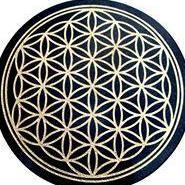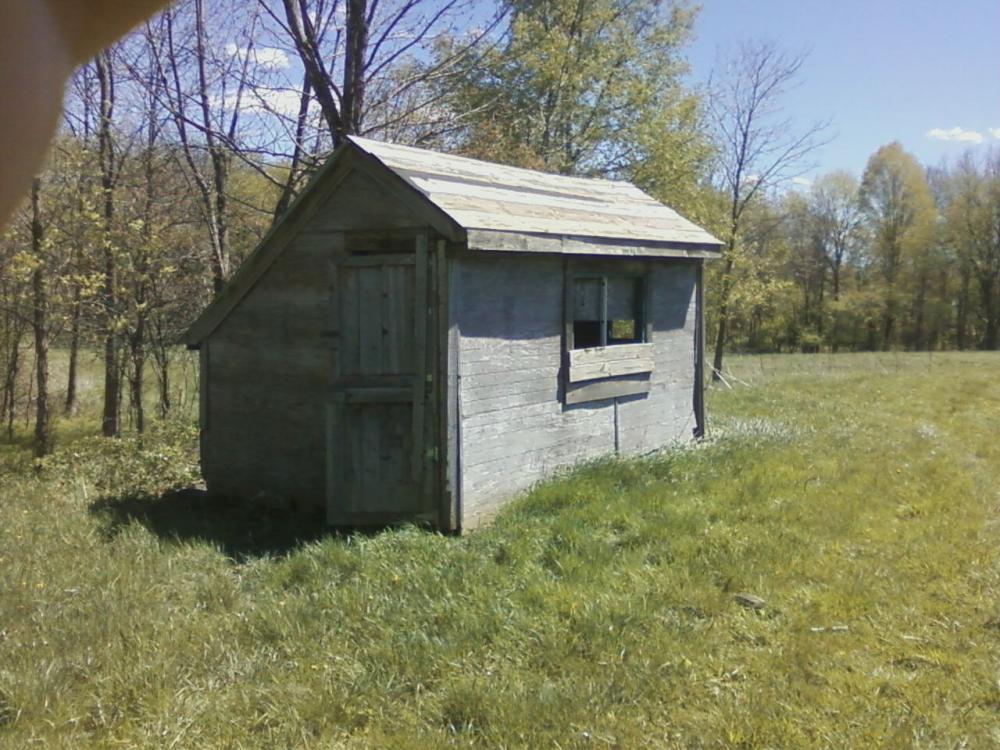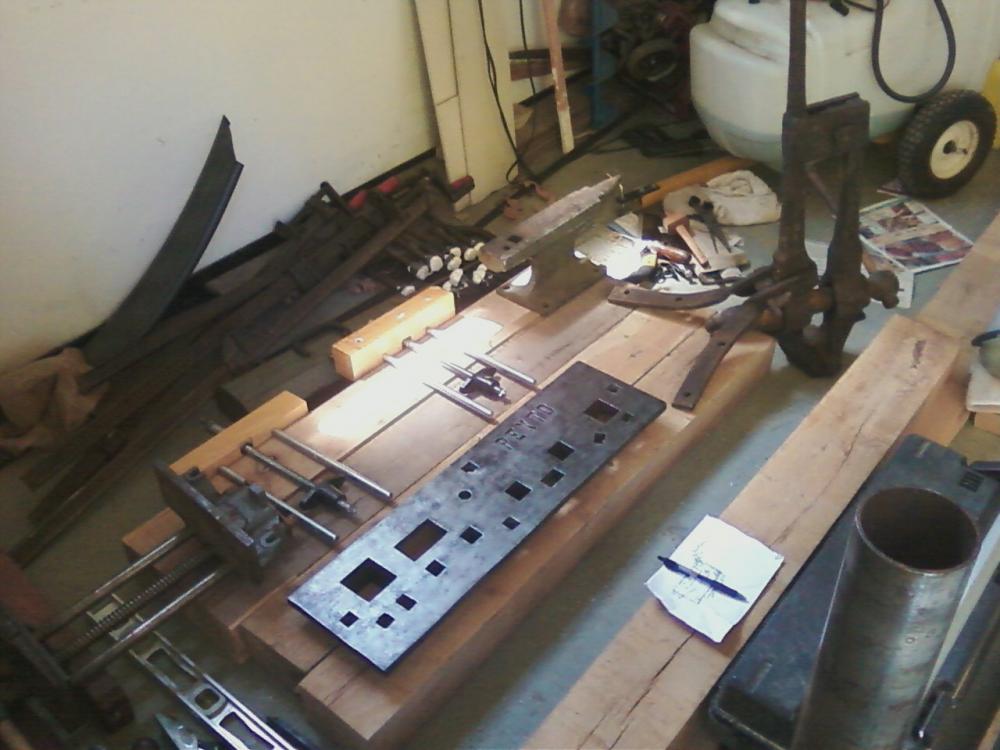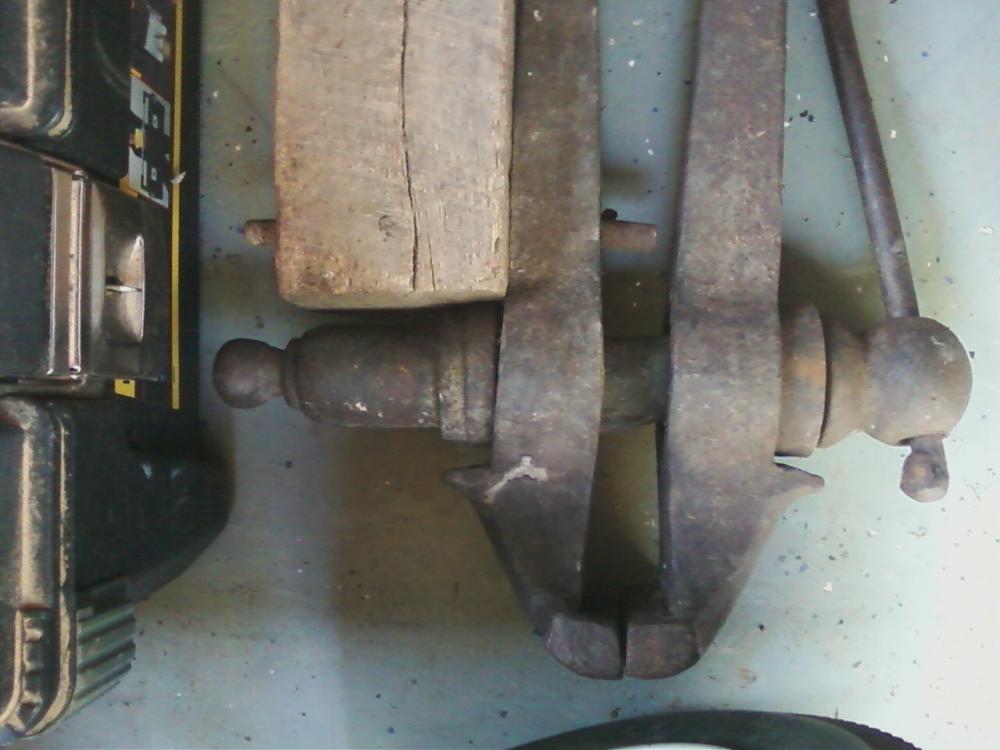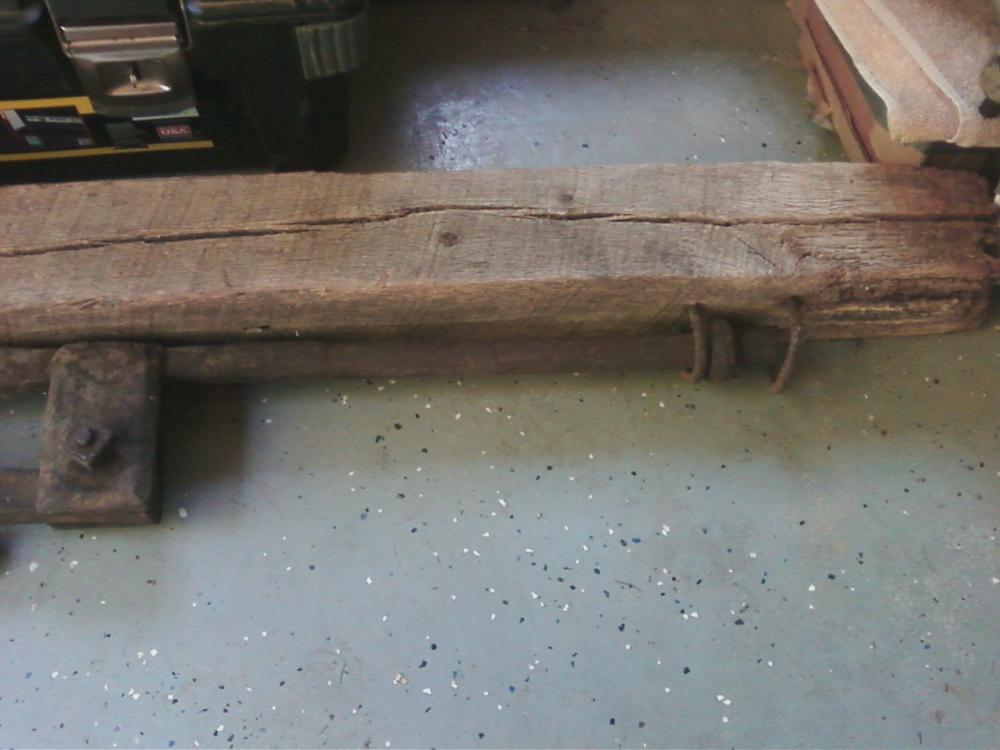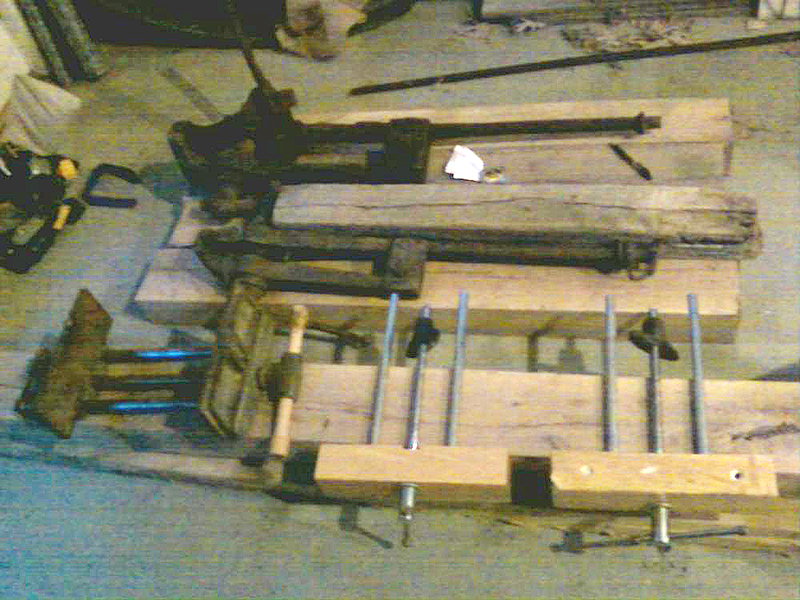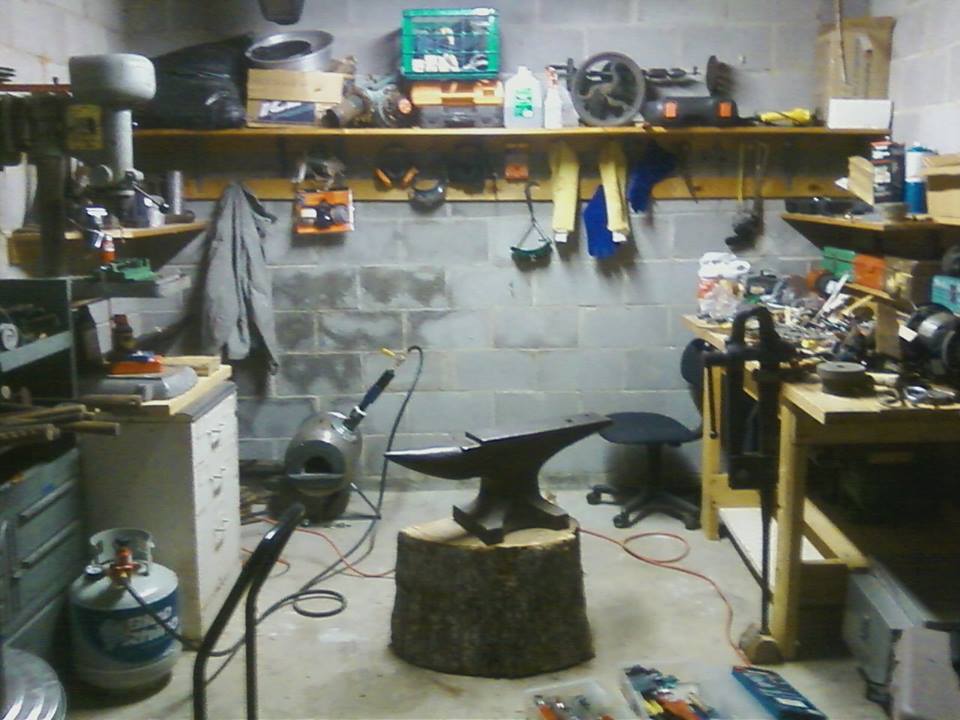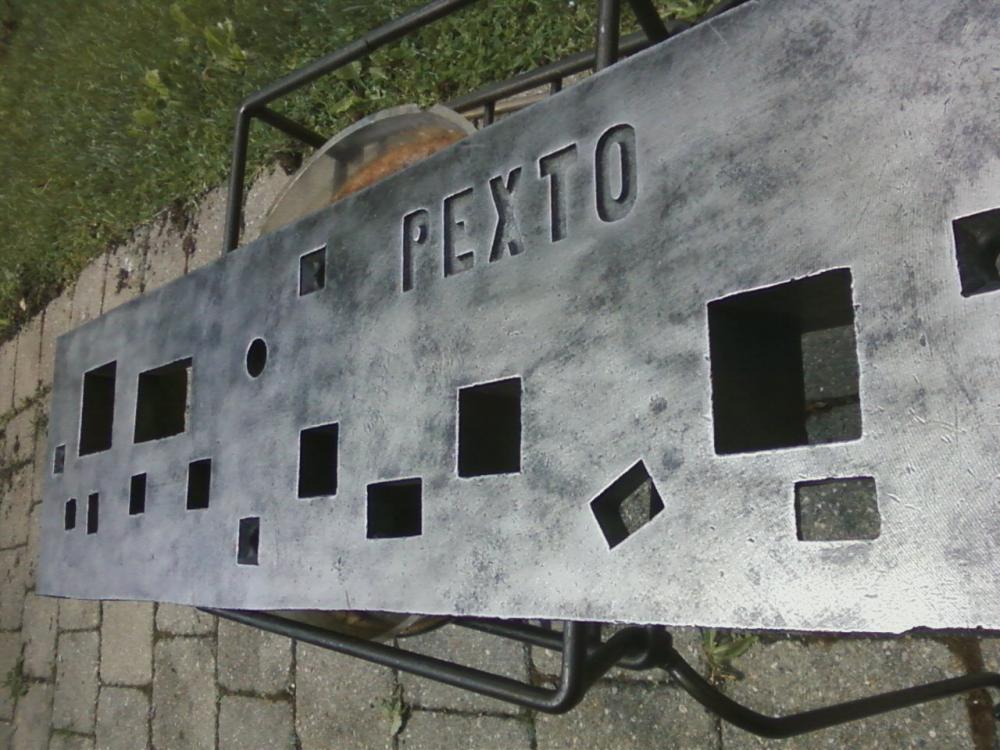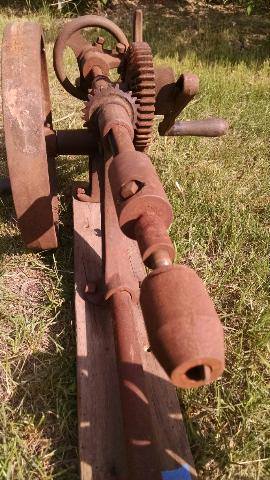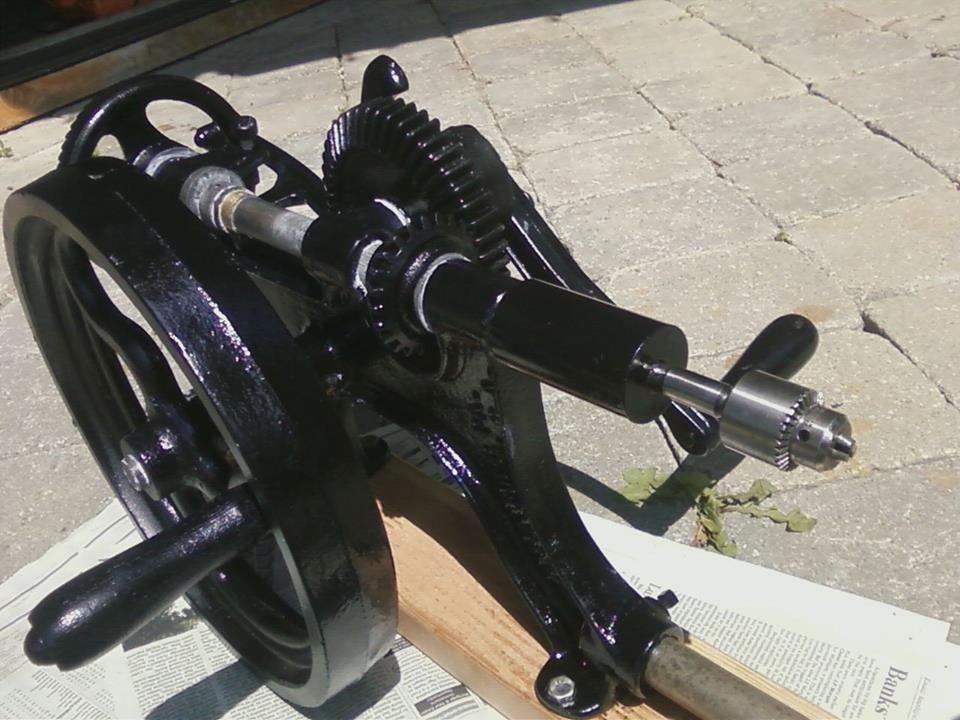-
Posts
17 -
Joined
-
Last visited
Profile Information
-
Gender
Male
-
Location
Michigan, USA
Recent Profile Visitors
The recent visitors block is disabled and is not being shown to other users.
-
I have a tall skinny, a short skinny( pictured), a big boy (pictured), and a slightly smaller one. I'm just starting out though I have been collecting for a while I've only used one of them so far.
-
yeah I do want a free standing vise. I have 4 various sized post vise to use.... just working on which one to use for this bench.
-
historically inspired* just not of a particular style, functionality is why I want to make it. but who knows what I might make should someone with money asks me to make! I love those armors. I think I actually saw some of his work at a limited and special display at the smithonian. They had another ward and there were some of the most fantastic pieces I ever saw, inclusing one that had the repoused hair into the helm. many other kingly armors and portraits on display. But I forget who lent them the collection and what it was! some
-
yeah I've had that book for a few years now. It is most excellent. most of the armor I design may be historically inspired but is generally considered fantasy, I just consider it an artistic expression of the medium and function. For me I don't see a lot of interest in trying to copy and reproduce historical armor except as a for fun experience to see how I would. I do want some exposed "outside" area. will see what I could do for doors and stuff. the list of things I want to do is immense. and lots of it requires the planning and forsight to do it right. I haven't been on the smithing websites much in the past few years because I haven't had shop space. Also have a pot belly stove to install for winter. Michigan winters from my limited experience can get cold like anywhere, its not really that it is the coldest or the snowiest, just that its very grey and dreary, the sun hardly shines, and it last a long time. The summers though, pure paradise.
-
those are fine suggestions. I do want to extend the roof some, if even to have an open canopy I can go from there. I may build the new stake plate block a little longer now to make sure I can straddle it! I don't really plan to do a lot of wood working as a focus of my shop but I could see myself buying small slabs, tailoring them and making a bench or something. I do like mixed media. I have lots of creative interest so need to be adaptable for multiple capabilities. Eventually you know I want to build a larger dedicated shop with concrete floors. It has been a child hood obsession to build armor. But what I want to do is make fixtures, and handles and functional things that I can then demo for and sell at a ren faire.
-
your right, maybe the stake plate does not belong! (the main inspiration behind this build too!) I may just bolt up some of this awesome pine I have and make a short small movable block for it. then have my work bench to do other finish stuff on. unfortunately my heavy vise is also the tallest and jaws rest at elbow level making it a possible candidate for the bench. Yet the smaller vise is just above wrist height yet is not heavy enough for forge work. (or is it>? beat it til it bends, beat it til its back again>?) I may just have to improvise with stepped risers to stand on. The shed itself is about 10x14 I need to add some roof, tighten some joints and take out the floor and put down gravel for now. @thomaspowers, just checking it out now, thanks for the link trail!
-
I would like to for sure. I do have a metal wall mounted metal work table. I had my medium vise on it at my old shop. But the problem is for the time I will have 2 shops one, small farm shed" and select power tools to be brought out of garage. So that is where I will be doing any welding, until I can expand and/ or get power. So I do want to use my heavy vise for forging. If the consensus is that a mobile stand would be better for it then I am open to suggestions. I could then mount the smaller vise on the table for various non hot forging work. But its going to be really stout. and the brackets fit this bench so nicely. it may be a while before I make a metal table that could handle it. I think I am ok with making it a shorter bench than normally for wood working, I can work Japanese style. I just happen to have the vises on hand and might find them useful. I am 5' 11" and had about 33" from ground to knuckle with shoes on. To mount the smaller vise though I would have to bend the leg, I could even do this so that the end notches into the leg of the bench. here is the layout I am envisioning. including details on small vise. The anvil will most likely be secured with dogs and clamps. also I am considering doing a light burnt finish on all but the top to help preserve, but realize this may not be good idea, but aesthetically would make this breath taking. since i would have champhered the legs like a post vise. the small one doesn't have that tooling. other options, is make it a full height bench without the stake plate and put that on something small with no extras. I have some 2"x7" pine I could use for that.
-
Hello, getting ready to build a workbench that I can use for my pexto stake plate, post vise, and wood working vises, So I can also use this bench to do wood working things when needed. making it out of 4"x6" oak beam and rough cut 1.5"x 7.5" boards. I mostly have hand tools to do the job. Trying to find he right height. I have the smaller post vise from bottom tip to mount hardware is about 29" and for my largest and prettiest one is 32" I also have a intermediate sized vise but its jaws aren't as precise. I think I want to mount the larger one I think overall the bench will weight a few hundred pounds, and its at least a 90lb vise, so should provide ample leverage, especially that the mount fits so nice on the table top. I am going to mount that in the corner at 45% from the sides. I then have a regular easy mount wood workers vise my uncle in law gave me some time ago so that will go on the opposite far end. then you see 2 screw vise clams from a mass produced workbench. It was damaged and is rickity and will be come some kind of work station. I want to mount them on the opposite side I mount the face plate and post vise together to clam one long piece. Even ideas come of taking 2 small bike gears and chain and welding the gears to the turn handles. build small sheet metal cage for it. would be a fun project. Questions: how beneficial would it be to run some threaded rods through my table top to really tighten it down. Do I need copper face plates for my longer vises if I were to clamp plate or sheet metal in it? how far can I mount the smaller vises from each other? max length of that vise? (overall bench will be just over 4 ft. ) what are optimal heights for wood working benches, and pexto stake plates ( I figure even if some anvils make the height uncomfortable i can build a little raiser platform to stand on. but still be at more comfortable heights for other work as option ) any good methods to get the smooth rods out of the wood part of the 2 cheapo screw vises? thank you for any tips and considerations!
-
I appreciate the feedback. thank you for your time. The good and the specifics now that I had time to do some measuring. 25 5/8" long, by 10 3/4"high. the plate is 5/8'' I guesstimate about 110-130 lbs. More on the mystery of the step hole, or... I think I know what broke the anvil. The hole on the step is odd it is about 5/8" wide and 1" deep but the sides not creating the edge of the step go down at a further angle creating a small pocket in the step. the outer edges of the step are quite flared out and the ones near the hole are curled over. This to me suggest some kind of jig possibly used for cold work which eventually spit the seam. But what what this for and why make the jig into the anvil is unknown. I might attribute some of the bowling of the hole to be partly from erosion because there is a lot of grit, dust, slag, rust etc... at the bottom. But I cannot agree to that exclusively because it is not uniform, being that the sides near the edge are flat. I am fascinated and want to try electrolysis since it is so easy to assemble, it may work wonders for me later. I will keep this project posted. and see what I feel is the best step after that. falling more smitten over this one all the day.
-
I get what your saying but Nothing last forever especially if you want to hone the tool. Why sharpen a knife? every time that is done it removed metal that can't come back. eventually there will be no usable knife. The idea is not to forget about it and make it more usable, I don't really want to add pit marks to my work. I guess if this thing survives 8 owners someone will have to reface it with welds, but honestly that seems like it could go even worse if not heat treated right. The idea for me is to take care of it. With the tools I'm using 1/32 would take me quite a while to do. I'm just looking to get a smooth top. so what is enough face plate?
-
thank you for the write up Frosty (and all who replied) I did look at that electrolysis (not electro plating) But I thought there might be a process that bonded fresh iron to the rust molocules in place. Turns out its pretty simple and I think I have most things to do it, so its worth a try cause it might help me with some other stuff too.. thanks
-
On another note. Topically... I didn't find the pitting to be that bad on the face of the anvil. Mostly on the sides and bottom. But still What is the difference in takin' 1/32 off 1/2 inch hard plate still supported by 100# iron? I am not too familiar or set up at all to do electro-plating but it might be worth looking up to see what that would cost and might accomplish. Thanks for the tip!
-
The answer is YES. I loooove tools, most works of art in design and function and ingenuity. Some of my best are a cast iron drill press off a WW2 battleship I got near Annapolis MD. I use it, and intend to. A old forged bark spud with a neat wood handle, and yes I have used it! My 210 lb Budden was in my college room 14 yrs ago, I sometimes rode it likes a surf board. Intend to use it 7 generations. I have always wanted to be a metal smith, maker, of all trades. So I have many tools mostly hand tools. Some I do use, some I just find neat but practically may never need. and if I can find a good deal I will restore and one and see if someone appreciates its new form in an exchange. Really the issue is not about having the tools to do the job. I need a space. I am working on fixing a small shed near a farm field for hot work and wheeling things out of a garage for power stuff. So that is my goal among the many other things I must do in a Michigan summer. When I was a teacher I had a nice little shed to work in, but honestly, between work as a teacher and everything I mostly just had fun building the shop and putting it together than having the time to use it to make stuff... oh, there's the anvil and press and gas forge I assembled.
-
Ok that I can understand. I saw a you tub vid of a young man "restoring" an old axe head, and yeah to my dismay ground it all down til it looked modern, and possibly lost its treat. I would have just used steel wool and some W-D40 on that one and ground the edge down. I definately would not want to lose any character this anvil has. I already have a larger budden I can use for heavy work but I think I can get a flatter top from this one with no filler needed. I have been collecting a lot of smith tools but my more modern tools are not as good. So I basically used a wire wheel in my drill in short burst (to let cool) but its not that fast so its really not as good as some other products I have used. Here is a pic of a stake plate I worked on. I started with the wire brush and even after several passes was not giving me a deep enough finish. So I used these like scotch brite pads on a disk and it cleaned up to the right amount. While still keeping even the machining lines on the surface of the metal. for some more fun here is one of 2 drill pressed I have restored. Came to me totally frozen.
-
I meant arc welding yes.... but with more research I see arc welding was known about ( arc discovered in 1800, but carbon arc welder invented 1881). I think at this point I am not going to weld anything as long as the original fix is working I see no need to do so. I can always do it if the fixture gets lose. right now I do not even think my little 110 arc welder is even up to the job. It has also been sitting in a barn unpreserved for who knows how long for rust etc... the top actually looks ok and in much better condition than many other old anvils. I am not going to grind! never said it. I said mild abrasive.... as is a wire wheel. Well thanks so far i should have some time on Weds to work on it. And will bring back results of test. any ideas about that table hole?

